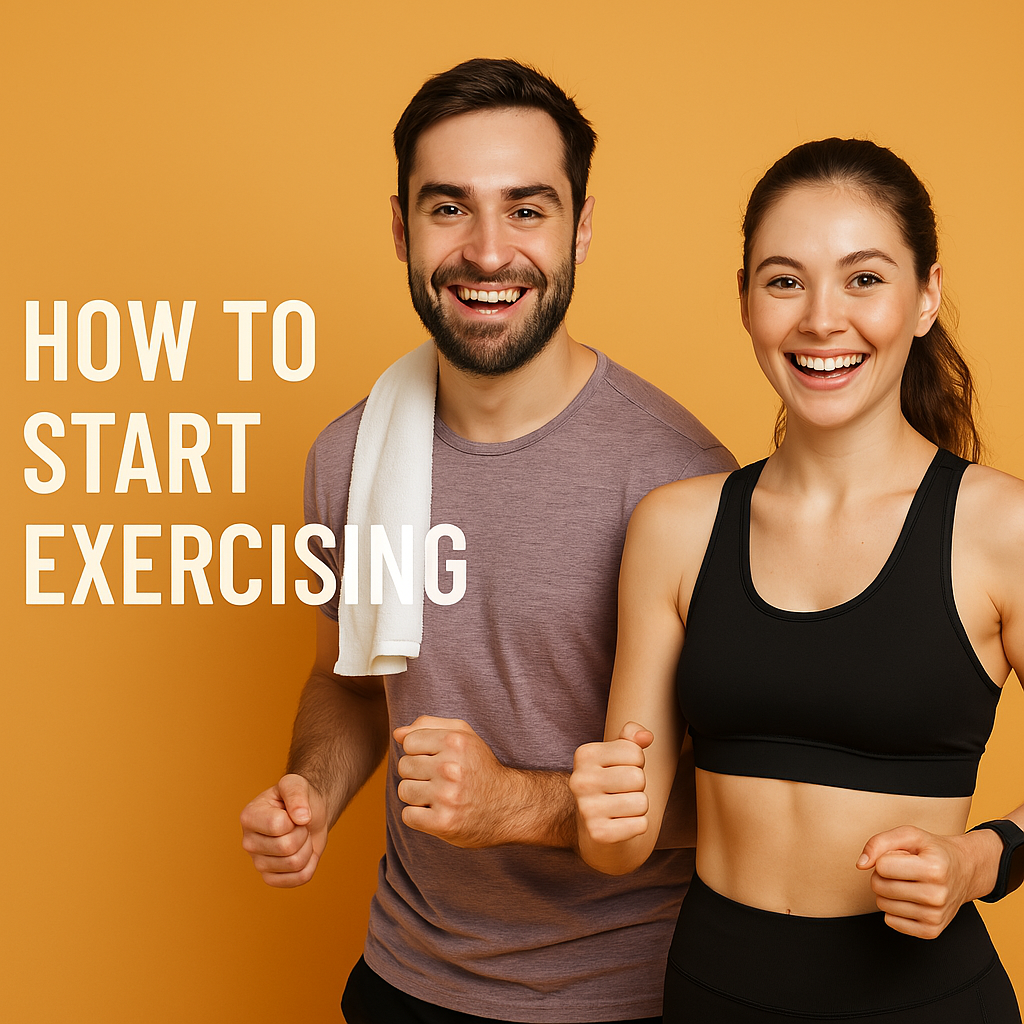Introduction:
Thinking about how to start exercising but not sure where to begin? You’re not alone. Whether you’re out of shape, recovering from a long break, or simply new to fitness, taking that first step can feel overwhelming. The good news? You don’t need to be a gym regular or fitness expert to get started.
This simple fitness guide for beginners will walk you through everything you need—from setting your first goal to building a routine that sticks. Backed by science and designed for real life, these tips will help you start exercising for the first time with confidence and consistency.
Trusted Source: CDC Physical Activity Guidelines
🧭 1. Understand Your “Why” – Set a Clear Purpose
Before jumping into your first squat or walk, ask yourself: Why do I want to start exercising? Studies show that people stick to a beginner workout routine longer when they connect it to personal, meaningful goals.
💡 Examples of effective fitness goals:
- “I want to feel more energized and less stressed.”
- “I want to sleep better and build confidence.”
- “I want to be able to keep up with my kids.”
🎯 Use the SMART method:
Specific, Measurable, Achievable, Relevant, Time-bound
→ Goal example: “Walk for 15 minutes, 3 days a week, for the next month.”
🐢 2. Start Small – Consistency Over Intensity
If you’re wondering how to begin working out, remember this: small, consistent actions matter more than long, intense sessions. New studies show that even 5–10 minutes of movement per day can lead to real results over time.
🚶♀️ Start with activities like:
- A short walk after meals
- Beginner yoga or mobility videos
- 7-minute bodyweight circuits at home
💬 Don’t wait for motivation—build momentum by showing up, even briefly.
😄 3. Choose What You Enjoy
The best beginner exercise plan is the one you’ll actually stick to. You don’t need to run or lift weights if you hate it. Explore different types of movement until you find something you enjoy—because enjoyment leads to consistency.
🎨 Options to try include:
- Dancing in your living room
- Swimming, biking, or hiking
- Group fitness classes or online tutorials
👟 Fitness should feel rewarding—not like a punishment.
📅 4. Build a Habit That Fits Your Life
Knowing how to build an exercise habit is key to long-term success. One proven method is habit stacking—pairing your workout with an existing daily habit.
🔗 Examples of habit stacking:
- After brushing your teeth → do 10 squats
- After your morning coffee → stretch for 5 minutes
- After lunch → take a 10-minute walk
📝 Track your progress using a journal or app to reinforce the habit.
🧘♀️ 5. Respect Rest and Recovery
Every great beginner workout routine needs balance. Rest days aren’t lazy—they’re essential. Your muscles need time to rebuild, and your mind needs time to reset.
📌 Benefits of rest days:
- Prevents burnout and injury
- Improves energy and mood
- Supports better sleep and immune function
🧘 Try active recovery like light stretching or walking on rest days.
🔄 6. Mix It Up – Cardio, Strength & Mobility
A balanced beginner exercise plan includes three key components:
- Cardio: boosts endurance (e.g., walking, cycling)
- Strength: builds lean muscle (e.g., bodyweight, resistance bands)
- Mobility/Flexibility: keeps your joints healthy (e.g., yoga, stretching)
🗓 Sample Weekly Plan:
- Monday – 20-minute walk
- Tuesday – Strength training (bodyweight)
- Wednesday – Light stretching or yoga
- Thursday – Rest
- Friday – Cardio (bike or brisk walk)
- Saturday – Strength or play-based movement
- Sunday – Rest or recovery walk
📈 7. Focus on Progress, Not Perfection
When you start exercising for the first time, don’t expect overnight results. Focus on how you feel, how consistent you are, and how your energy and confidence grow—not just the number on the scale.
✅ Track these wins instead:
- “I worked out 3 times this week.”
- “I slept better after moving today.”
- “I felt more focused after a walk.”
📲 Use an app, calendar, or notebook to celebrate each small win.
✅ Conclusion: Start Where You Are—And Keep Going
If you’ve been unsure how to start exercising, now you know: it doesn’t take hours in the gym or fancy gear to see change. It just takes one simple action—done consistently and with purpose.
The benefits of starting exercise go far beyond weight loss. You’ll build strength, improve your mood, sleep better, and gain confidence along the way.
So start today—whether it’s a 5-minute stretch or a walk around the block. You’ve got this. 💪


2 thoughts on “How to Start Exercising: A Beginner’s Guide to Working Out”